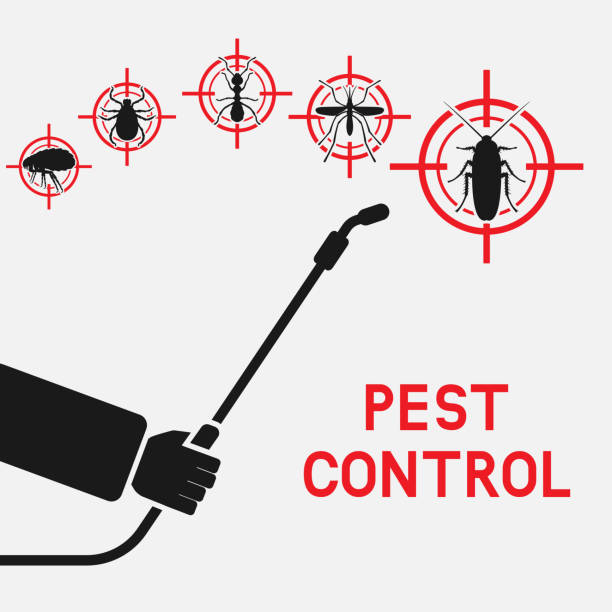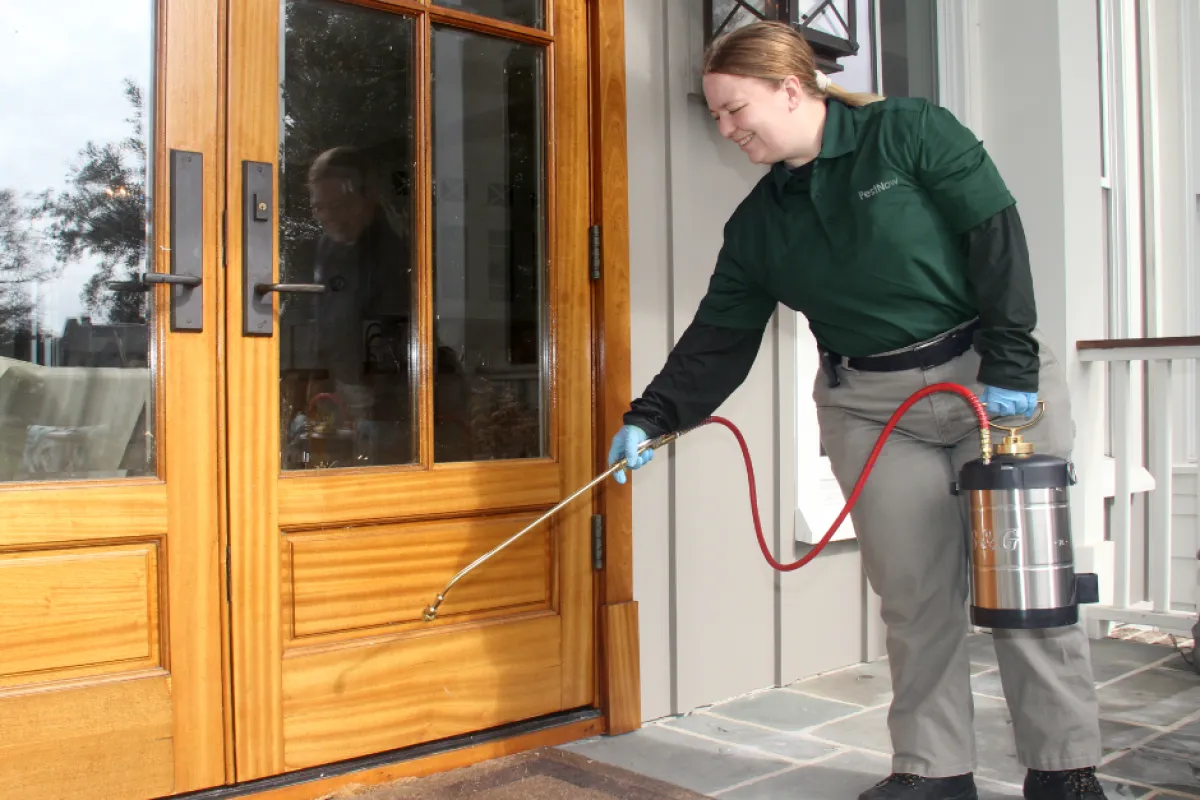Effective Coquitlam Pest Control Solutions for a Pest-Free Environment
Effective Coquitlam Pest Control Solutions for a Pest-Free Environment
Blog Article
Safe and Trusted Parasite Control for Lasting Security
Reliable insect administration calls for a multifaceted technique that balances eco-friendly integrity with the requirement for reliable insect reductions. The nuances of these techniques may not be immediately clear, motivating a more detailed assessment of the practices that can lead to sustainable parasite control results.
Recognizing Pest Control Approaches
Pest control encompasses a variety of techniques targeted at managing and eliminating undesirable pests and rats that can threaten both health and wellness and building. Understanding these techniques is essential for reliable parasite administration.
The primary classifications of parasite control methods consist of mechanical, biological, and chemical techniques. Mechanical approaches involve physical obstacles and traps to stop pest entrance and capture undesirable varieties. For example, using displays on home windows or using sticky catches can significantly decrease insect populations without presenting damaging substances.

Chemical parasite control is commonly the most recognized technique, utilizing chemicals to eliminate parasites. These chemicals can be efficient but need to be used with care to prevent adverse results on non-target species and the setting.
Benefits of Eco-Friendly Solutions
Just how can environmentally friendly services change insect control methods? The fostering of environmentally friendly insect control techniques provides various benefits, considerably improving the effectiveness and safety of pest management.

Another benefit is the favorable impact on neighborhood biodiversity. Green options are developed to target specific insects while protecting advantageous pests and wildlife, advertising a well balanced community. This strategy lines up with the growing customer need for sustainable techniques, enhancing the online reputation of pest control companies.
Integrated Pest Monitoring Strategies
The execution of environment-friendly solutions normally leads to the fostering of Integrated Pest Administration (IPM) strategies, which even more enhance bug control efficiency. IPM is an alternative strategy that combines several tactics to take care of insect populaces while reducing ecological impact. This technique stresses making use of organic, cultural, mechanical, and chemical controls, ensuring a balanced and lasting approach of insect administration.
One basic element of IPM is the detailed assessment of insect task and ecological conditions. By keeping track of bug populaces and recognizing their life cycles, experts can implement targeted interventions that interrupt the insect's environment or lifecycle, minimizing dependence on chemical pesticides. In addition, social techniques such as plant turning and environment adjustment can significantly decrease insect facility and recreation.
One more essential part is making use of biological control representatives, such as helpful insects or bacteria, which can naturally suppress insect populations. When chemical applications are required, IPM prioritizes using low-risk pesticides and applies them selectively, minimizing direct exposure to non-target microorganisms and people.
Integrating IPM techniques not only improves parasite control performance however likewise promotes a safer ecosystem, straightening with the expanding demand for sustainable practices in parasite monitoring.
Safe Practices for House Owners
Understanding the relevance of risk-free practices in pest control can encourage house owners to efficiently manage insect problems while protecting their health and the environment. Carrying out non-toxic approaches and safety nets is critical in lessening direct exposure to damaging chemicals.
Home owners should first analyze their setting for conditions that draw in bugs, such as standing food, clutter, and water waste. Consistently cleaning and sealing access factors can discourage bugs from attacking the home. Making use of all-natural deterrents, such as necessary oils or diatomaceous planet, can give efficient alternatives to chemical pesticides.
When chemical therapies are required, homeowners ought to choose items that are especially labeled as safe for household usage. It is vital to follow application guidelines diligently to prevent overexposure. In addition, utilizing targeted therapies in areas where bugs are recognized, instead of covering splashing, can dramatically decrease chemical use.
Finally, maintaining open communication with pest control professionals is vital. Homeowners should ask about the safety and security of items utilized and request environment-friendly choices whenever possible. By adopting these secure techniques, house owners can produce a healthier living setting while successfully handling insect issues.

Tips for Long-Term Security
Establishing a pest monitoring approach that highlights long-term defense can considerably improve the effectiveness of the secure methods previously reviewed. To accomplish this, homeowners should apply normal assessments of their home, focusing on concealed areas such as attics, cellars, and crawl areas. Early detection of parasite activity is essential in preventing invasions from taking hold.
Furthermore, maintaining a tidy environment is essential. This consists of proper food storage space, promptly cleaning spills, and regularly disposing of rubbish. These techniques reduce attractants that attract insects right into the home. Moreover, sealing entrance factors, such as fractures around doors how to get rid of mice and home windows, can effectively block prospective bug accessibility.
Landscape design must also be thought about; keeping plants trimmed and maintaining a distance between greenery and the home minimizes concealing places for parasites. Making use of all-natural deterrents, such as crucial oils or diatomaceous planet, can further discourage infestations without resorting to harsh chemicals.
Lastly, collaborating with a professional insect control service for periodic evaluations can provide an added layer of security. These specialists can use customized suggestions and advanced treatments, ensuring that your home continues to be protected versus bugs in the long term.
Final Thought
In final thought, risk-free and reputable parasite control needs a diverse technique that stresses green techniques and integrated pest monitoring. By carrying out natural deterrents, conducting normal assessments, and maintaining correct cleanliness, building proprietors can considerably lower bug populations while shielding useful insects and the atmosphere. Going Here Collaboration with termites expert pest control solutions enhances the efficiency of these techniques, making certain tailored solutions that supply long lasting defense and comfort versus future infestations.
Reliable insect monitoring requires a complex approach that stabilizes eco-friendly integrity with the demand for effective bug suppression. The adoption of environment-friendly bug control approaches offers countless advantages, dramatically enhancing the effectiveness and safety of insect monitoring.The implementation of green services naturally leads to the adoption of Integrated Pest Monitoring (IPM) strategies, which better boost parasite control efficacy. exterminator coquitlam. By keeping an eye on parasite populations and identifying their life cycles, specialists can apply targeted interventions that interfere with the pest's habitat or lifecycle, decreasing dependence on chemical pesticides.In verdict, reputable and risk-free bug control calls for a diverse strategy that stresses eco-friendly methods and integrated bug administration
Report this page